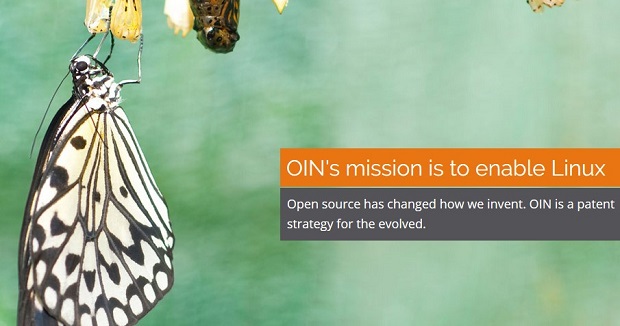* – This article has been archived and is no longer updated by our editorial team –
Below is our recent intervew with Keith Bergelt, CEO at Open Invention Network:

Q: Hi Keith, the last time we spoke, Open Invention Network was experiencing significant growth, how many community members do you have?
A: I am very pleased to speak with you again. Open Invention Network (OIN) continues to be the largest patent non-aggression community in history. Our community has surpassed 2,500 corporate participants. The community base is comprised of organizations from startups to a veritable “who’s who” of technology and business leaders.
Our value is derived from our royalty-free cross license that enables patent peace in core technologies and supports innovation in Linux and other particularly important open source projects. Every community member receives royalty-free access to the Linux-related patents of the 2,500 other licensees, which in aggregate own over two million worldwide patents, via the cross-license.
Additionally, by leveraging a portfolio of more than 1,300 strategic global patents and applications, OIN provides a defensive deterrent to patent aggression in the core. While our patent portfolio is of considerable value – on the order of hundreds of millions of dollars – any person or company can gain access to OIN’s patents for free so long as they agree to cross-license their Linux-related patents to all other OIN licensees and refrain from litigating such patents.
Q: The last time we spoke, OIN was focusing on four key vertical industries, is that still consistent with your vision?
A: Yes, while OIN is focused on ensuring a level playing field for all major open source and Linux projects, we continue to see IoT, blockchain, intelligent automotive platforms and network function virtualization (NFV) as increasingly strategic for areas where Linux and open source continue to become the critical, foundational technologies in key vertical industries. Through our continued deterrence against patent aggressors and community growth initiatives, we look to ensure a fair playing field for open source technologies like OPNFV/ONAP through the LF Networking Fund, Automotive Grade Linux, the Open Container Initiative and Hyperledger. Our overarching goal is to ensure continued collaboration and innovation in these technologies, ultimately strengthening the marketplace through the unhindered development and sale of the best products and services.
 Recommended: Jonathan Levy And Sara Rafalson Bring Expertise To Largest Network Of Public Electric Vehicle Fast Charging Brand
Recommended: Jonathan Levy And Sara Rafalson Bring Expertise To Largest Network Of Public Electric Vehicle Fast Charging Brand
Q: The last time we spoke, you discussed OIN’s activities surrounding Linux and IoT. What is OIN doing with regard to blockchain?
A: Blockchain and open source are incredibly intertwined. Blockchain’s origins lie in open source. In 2009, its founder, Satoshi Nakamoto, released the software as open source. Since that time, Bitcoin usage has grown, other cryptocurrencies have gained attention, and the underlying distributed ledger technology (DLT) has been recognized as a tool for improving all transactions.
Beyond the specific blockchain software, the underlying infrastructure that supports DLT and other middleware and application layers is completely dependent upon open source. Open source code is so effective and cost-efficient that it is used in more than 90 percent of all software. The Linux Foundation estimates that more than 31 billion lines of code have been committed to open source software repositories.
Our goal is to ensure that innovation continues unhindered by intellectual property issues in core Linux and open source infrastructure, and clearly there are foundational blockchain technologies that are part of that core.
Q: What blockchain-related patents does OIN own, or is looking to acquire, for its strategic portfolio?
A: First, there are not many blockchain / DLT patents that have been granted – so far only a little more than 200 worldwide have been issued. We recently published an article that lays out the trends in blockchain patent ownership and applications. Applications are on the rise, but it is not clear what percentage patent authorities are granting. To date, U.S.-based technology and financial services companies have been granted the most patents. In terms of blockchain / DLT patent applications, Chinese-based, financial services organizations comprise most of the top-10 filers.
Then there is OIN’s mission, which is to focus on protecting the foundational technologies of open source and blockchain-related projects like Hyperledger. We look to ensure that innovation can happen freely in the core. Higher in the technology stack, in the middleware and application layers, is where proprietary differentiation takes place, and that is not really our focus. We see that higher in the stack is where the majority of patenting will take place.
That being said, we already have filed a number of blockchain-related patent applications, are close to purchasing a blockchain-related portfolio and have designated numerous software packages through our Linux System Definition, that are relevant to DLT. While we continue to observe the patent landscape with an eye toward strategic acquisition, and will continue to add software packages to the Linux System Definition, there is quite a bit of DLT technology that is already being protected.
Open source is inherently powerful because good OSS code is used in many different ways – across a spectrum of different kinds of applications. If a very useful piece of code is created, it may be reused across a number of different software platforms and applications that span numerous industry verticals. It is that kind of code, aimed at the foundational technology layer of Linux and Hyperledger, that we are here to protect and promote.
Q: What is Hyperledger?
A: Hyperledger is a DLT project hosted by the Linux Foundation, with the goal of enabling organizations to build robust, industry-specific applications, platforms and hardware systems to support their individual business transactions by creating open source distributed ledger frameworks and code bases. While Hyperledger has several different open source blockchain platforms and toolkits, one of its important platforms is Hyperledger Fabric, a permissioned framework. All told, Hyperledger is a global collaboration of leaders in finance, banking, IoT, supply chain, manufacturing and technology. It has support from IBM, American Express, JP Morgan, Daimler, Intel, Hitachi and more than 200 other technology, finance and manufacturing industry leaders.
 Recommended: BounceX: MarTech’s Best Kept Secret Raises $37M
Recommended: BounceX: MarTech’s Best Kept Secret Raises $37M
Q: Any final thoughts you would like to share?
A: OIN exists due to the leadership of Google, IBM, NEC, Philips, Red Hat, Sony, SUSE and Toyota, which recognize the ubiquity of software and the shift to collaborative, project-based innovation that open source software development represents. In order for the creativity and inventive capacities of the hundreds of thousands of people developing around DLT open source projects and platforms to be realized, it’s vital that patent non-aggression in the core is safeguarded. Companies and individuals seeking to support patent non-aggression in DLT should join our community, and commit to the onward sustainability of the collaborative model of innovation that is central to open source.

